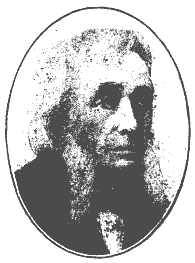
Felix Ravaisson-Mollien
Encyclopedia

France
The French Republic , The French Republic , The French Republic , (commonly known as France , is a unitary semi-presidential republic in Western Europe with several overseas territories and islands located on other continents and in the Indian, Pacific, and Atlantic oceans. Metropolitan France...
philosopher and archaeologist.
He was born at Namur
Namur (city)
Namur is a city and municipality in Wallonia, in southern Belgium. It is both the capital of the province of Namur and of Wallonia....
. After a successful course of study at the College Rollin, he went to Munich
Munich
Munich The city's motto is "" . Before 2006, it was "Weltstadt mit Herz" . Its native name, , is derived from the Old High German Munichen, meaning "by the monks' place". The city's name derives from the monks of the Benedictine order who founded the city; hence the monk depicted on the city's coat...
, where he attended the lectures of Schelling
Friedrich Wilhelm Joseph Schelling
Friedrich Wilhelm Joseph Schelling , later von Schelling, was a German philosopher. Standard histories of philosophy make him the midpoint in the development of German idealism, situating him between Fichte, his mentor prior to 1800, and Hegel, his former university roommate and erstwhile friend...
, and took his degree in philosophy in 1836. In the following year he published the first volume of his famous work Essai sur la métaphysique d'Aristote, to which in 1846 he added a supplementary volume. This work not only criticizes and comments on the theories of Aristotle
Aristotle
Aristotle was a Greek philosopher and polymath, a student of Plato and teacher of Alexander the Great. His writings cover many subjects, including physics, metaphysics, poetry, theater, music, logic, rhetoric, linguistics, politics, government, ethics, biology, and zoology...
and the Peripatetics, but also develops from them a modern philosophical system.
In 1838 he received his doctorate, and became professor of philosophy at Rennes
Rennes
Rennes is a city in the east of Brittany in northwestern France. Rennes is the capital of the region of Brittany, as well as the Ille-et-Vilaine department.-History:...
. From 1840 he was inspector-general of public libraries, and in 1860 became inspector-general in the department of higher education. He was also a member of the Academy of Moral and Political Science, and curator of the Department of Antiquities at the Louvre
Louvre
The Musée du Louvre – in English, the Louvre Museum or simply the Louvre – is one of the world's largest museums, the most visited art museum in the world and a historic monument. A central landmark of Paris, it is located on the Right Bank of the Seine in the 1st arrondissement...
(from 1870). He died in Paris.
In philosophy, he was one of the school of Victor Cousin
Victor Cousin
Victor Cousin was a French philosopher. He was a proponent of Scottish Common Sense Realism and had an important influence on French educational policy.-Early life:...
, with whom he was at issue in many important points. The act of consciousness, according to him, is the basis of all knowledge. Acts of consciousness are manifestations of will, which is the motive and creative power of the intellectual life. The idea of God
God
God is the English name given to a singular being in theistic and deistic religions who is either the sole deity in monotheism, or a single deity in polytheism....
is a cumulative intuition given by all the various faculties of the mind, in its observation of harmony in nature and in man. This theory had considerable influence on speculative philosophy in France during the later years of the 19th century.
Ravaisson's chief philosophical works are: "Les Fragments philosophiques de Hamilton" (in the Revue des Deux Mondes
Revue des deux mondes
The Revue des deux Mondes is a French language monthly literary and cultural affairs magazine that has been published in Paris since 1829....
, November, 1840); Rapport sur le stoicisme (1851); La Philosophie en France au dix-neuvième siècle (1868; 3rd ed, 1889); Morale et métaphysique (1893). Eminent as a philosopher, Ravaisson was also an archaeologist, and contributed articles on ancient sculpture
Sculpture
Sculpture is three-dimensional artwork created by shaping or combining hard materials—typically stone such as marble—or metal, glass, or wood. Softer materials can also be used, such as clay, textiles, plastics, polymers and softer metals...
to the Revue Archéologique and the Mémoires de l'Académie des Inscriptions. In 1871 he published a monograph on the Venus de Milo
Venus de Milo
Aphrodite of Milos , better known as the Venus de Milo, is an ancient Greek statue and one of the most famous works of ancient Greek sculpture. Created at some time between 130 and 100 BC, it is believed to depict Aphrodite the Greek goddess of love and beauty. It is a marble sculpture, slightly...
.
See Charles Bernard Renouvier
Charles Bernard Renouvier
Charles Bernard Renouvier was a French philosopher.-Biography:Charles B. Renouvier was born in Montpellier and educated in Paris at the École Polytechnique. He took an early interest in politics...
, in L'Année philosophique (Paris, 1868); Dauriac, "Ravaisson philosophe et critique" (La Critique philosophique, 1885, vol. ii.).

